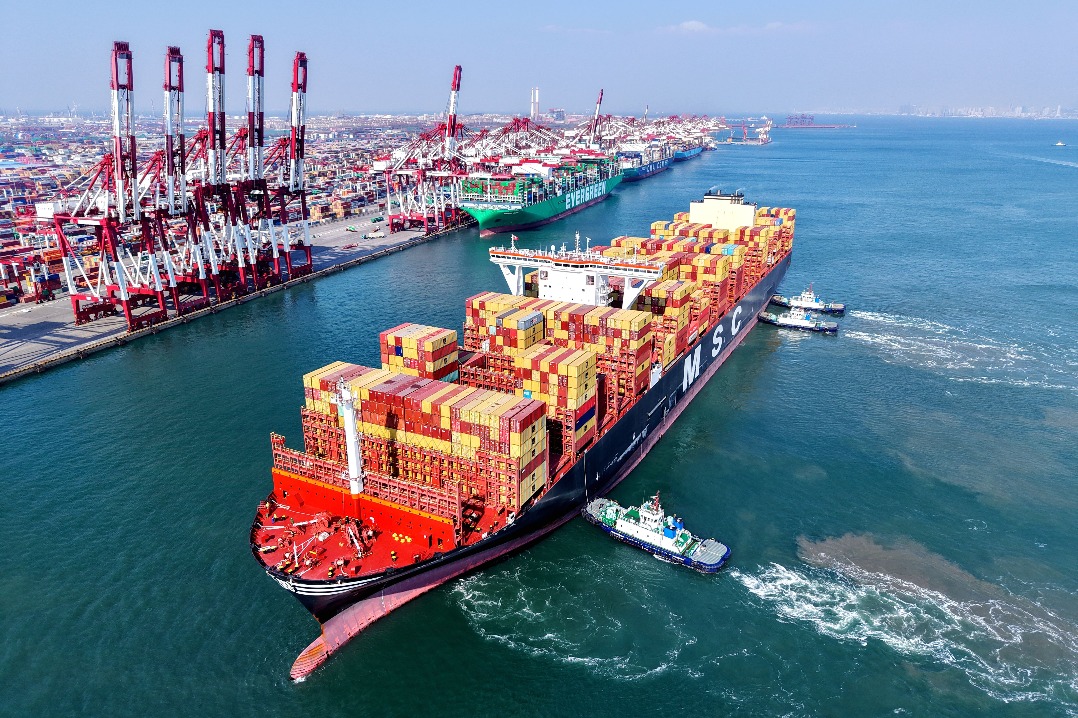Kone bets big on China's urban renewal effort, eyes wider market

Ye Zhengyan, a 63-year-old resident of Kunshan, Jiangsu province, could hardly hide his excitement when all the renovated elevators in his community became operational recently, offering a stable and smooth ride.
Ye and his family members, who have been living in the residential building for over 10 years, used to dread the noise and vibration of the aging elevators each time they walked out the door. The elevators, which were in use for the last 15 years, also used to be halted frequently for maintenance, forcing the older residents to take the stairs.
Fortunately, Ye and some 850 other families in the community had a chance last year to upgrade the elevators for free, as part of the city's move aligned with China's accelerating urban renewal efforts.
Supported by the nation's ultra-long-term special treasury bonds fund, a first batch of 2,196 aging elevators in Kunshan's residential buildings were approved for upgrade last November.
Among these, Finnish elevator and escalator company Kone completed the renovation of 2,106 elevators in eight months, covering 142 communities across the city and benefiting over 50,000 families.
Carmen Zhou, vice-president of modernization at Kone Greater China, said that the aging elevators were in diverse conditions. In addition to high failure rates, they were hard to maintain as each brand or type needed different spare parts, many of which were no longer in production.
Prioritizing safety and highlighting digital, intelligent and green features, the company has launched a new modernization department to come up with customized upgrade solutions for the elevators, as well as flexible production lines at its Kone Kunshan Park.
The upgraded elevators are all connected to the city's smart elevator management platform. With control systems meeting the highest industry standards, the renovated elevators can cut the failure rate by up to 55 percent and reduce the risk of trapping riders by up to 40 percent, with predictive maintenance services based on big data and artificial intelligence. Each upgraded elevator can also effectively reduce energy consumption by up to 50 percent, saving about 3,653 kilowatt-hours of electricity per year, according to the company.
Kone, which entered the Chinese market and set up base in Kunshan in 1996, has grown alongside the nation's rapid urban expansion. Over the past three decades, it has delivered more than 1.6 million units and maintained over 600,000 lifts in service across the nation.
Currently, its largest production base, Kone Kunshan Park, not only serves the domestic market but also exports products to over 100 countries and regions globally. Its largest overseas R&D center, owning over 230 valid patents and serving global markets, is also located at the park.
Last year, Kone Group saw its revenue reach 11 billion euros ($12.79 billion) globally, with Kone Greater China contributing 23 percent to the total. As China ramps up efforts in urban renewal, the company is betting boldly on in its modernization sector.
"Our modernization department has seen double-digit growth in orders in the past three years, which makes us fully confident in the Chinese market. We are set to stay committed to this sector and seize a second booming chance for growth," said Zhou.
China had over 11.53 million elevators by the end of 2024, official data released in May show. Of these, 900,000 are aging units that have been in use for over 15 years. Moreover, the number of such aging elevators is expected to increase quickly, as the building construction and urbanization of 15-20 years ago was one of China's fastest such expansions, Zhou added.
Following the success in Kunshan, the company is fixing its eyes on the wider Chinese market, with future projects set in other cities and provinces, as well as investment plans in Shenzhen, Guangdong province.
wangxin2@chinadaily.com.cn




































